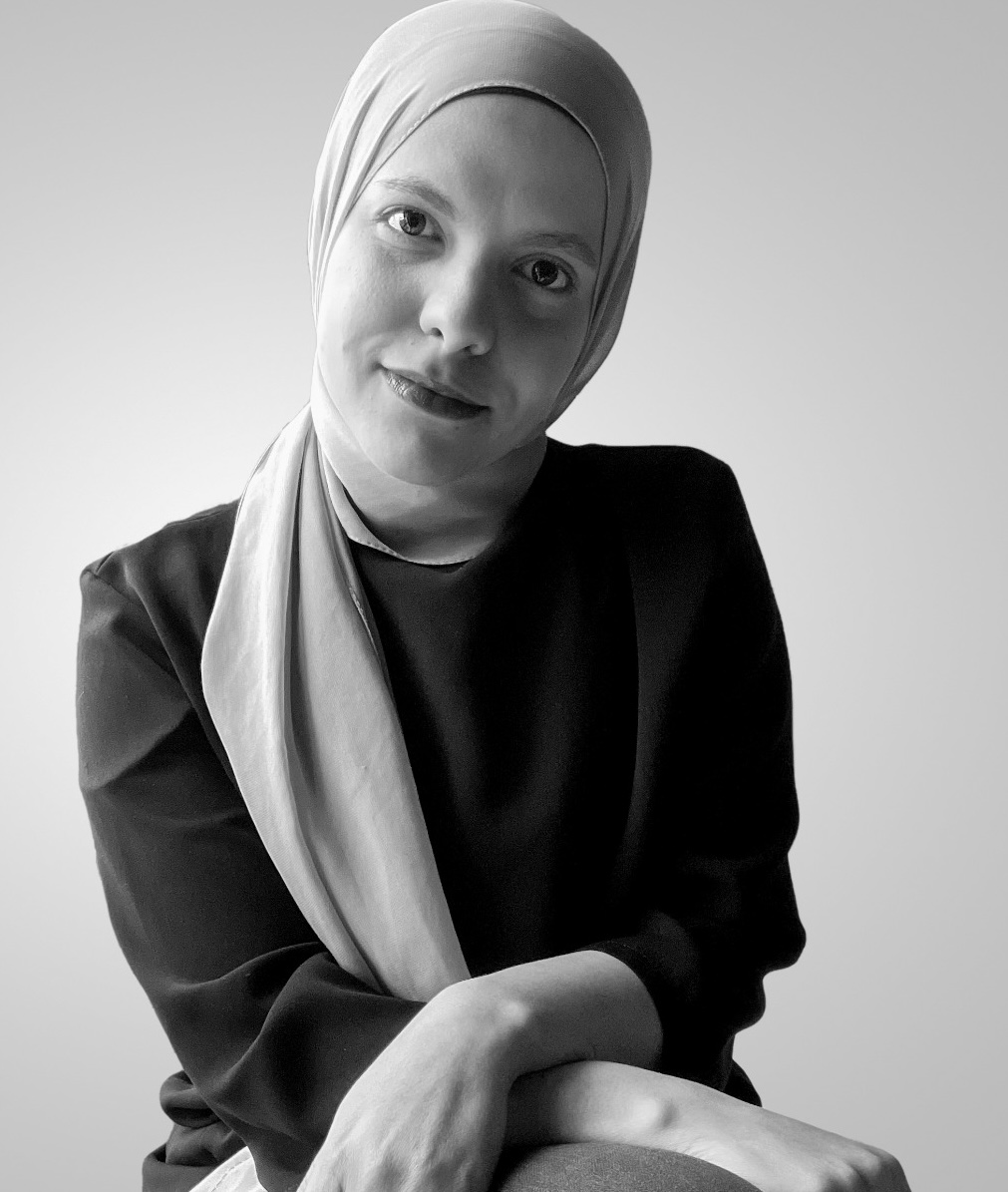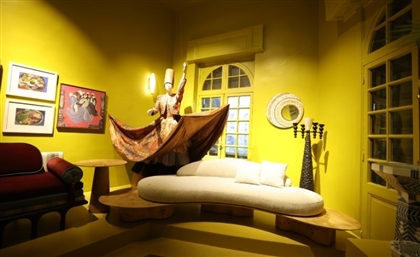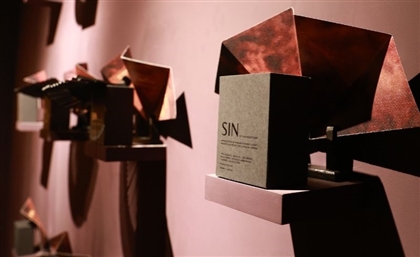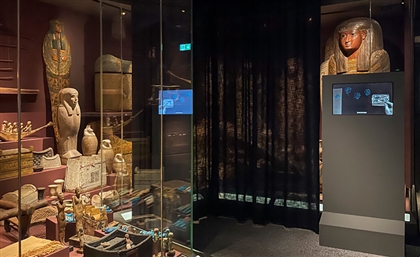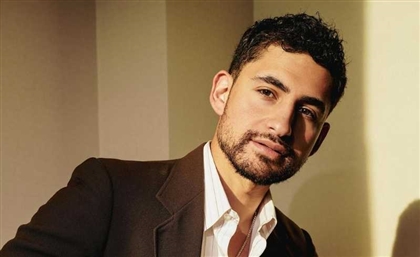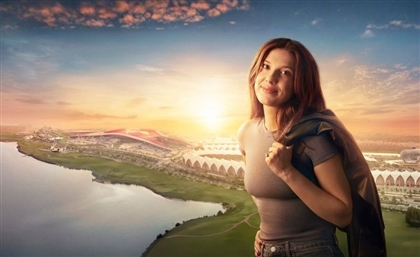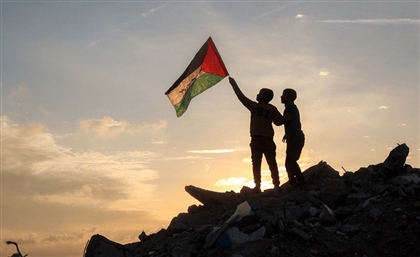Concrete Statements: Brutalist Beauties in the Arab World
These Brutalist landmarks across the Middle East stand as bold witnesses to a modernist era - monumental, misunderstood, and undeniably iconic.
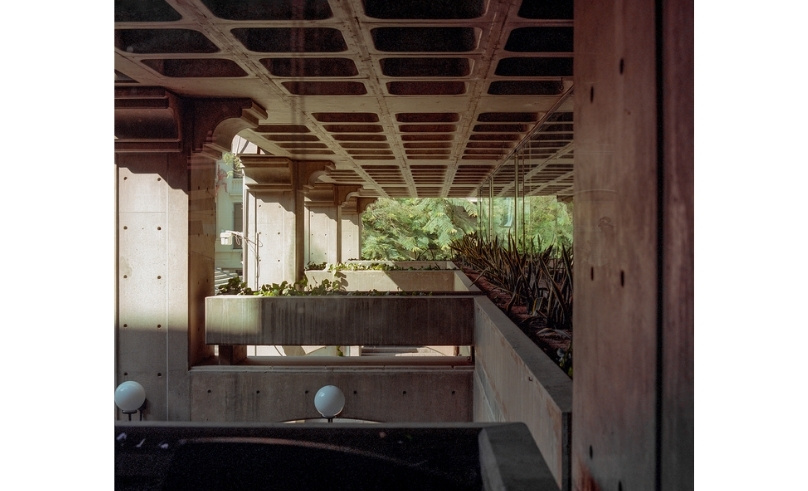
Brutalism in the Middle East emerged with ambition and urgency offering concrete answers to postcolonial futures, urban growth, and national identity. Many of these buildings were conceived as architectural displays of power and autonomy. Today, their raw forms remain to remind us of a time when architecture dared to be bold and unapologetically modern.
Jameel Centre – Cairo, Egypt
-37d67f14-1a02-49f1-a651-875d30cd27e4.jpg)
Originally built in 1989 for AUC and now anchoring the GrEEK Campus, the Jameel Center is a bold Brutalist landmark defined by fair-faced concrete, deep arches, and exposed structural grids. Its mashrabiyyas and marble details nod to Cairo’s Mamluk heritage without softening its raw, geometric form. The building’s coffered concrete ceilings and circular façade indents - left behind by bolts in the structure - embrace the expressive imperfections of cast-in-place construction. Inside and out, the design celebrates clarity and function.
National Assembly Building – Kuwait
-68c21d89-4f64-448d-84ee-19e9c25165a8.jpg)
Utzon’s 1989 design for Kuwait’s parliament makes concrete feel like cloth, with a sweeping tent-like canopy that anchors the public plaza. Its weightless billow offers a poetic yet uneasy nod to Bedouin heritage. The grid-based interiors and precast concrete forms draw from Arabian bazaars and bureaucratic order. While it gestures toward regional identity, the result is an eclectic collision of imported modernism and selective tradition
The Koujak-Jaber Building – Beirut, Lebanon
-0268281c-554f-4f77-9ad6-fbf479d18af8.jpg)
Nicknamed the Gruyère for its perforated concrete façade, this apartment block turns Brutalism into visual play. Circular and elliptical voids pierce a flat concrete skin, revealing glimpses of the building’s internal rhythm, windows, terraces, and structural slabs. From below, the shifting geometry distorts into a surreal optical effect, where circles become ellipses and the static appears in motion. Designed by Victor Bisharat, the building channels expressionism over function.
Le Corbusier Gymnasium – Baghdad, Iraq
-407238fc-fd2f-4b0f-a7f7-205830457bd5.jpg)
A rare Le Corbusier Brutalist gem in the Middle East, the gymnasium is part of a visionary sports complex, its bold massing, sweeping ramp, and cable-suspended curved roof echo Le Corbusier’s obsession with light, movement, and the architectural promenade. Originally it was imagined as a translucent "boîte à miracles" - a miraculous box of light and concrete. However, it evolved into a more grounded structure - still monumental, still modern.
Hotel du Lac – Tunis
-be175bfd-ab76-48af-b549-f59d2089fc67.jpg)
Built in the 1960s on the banks of Lake Tunis, Hotel du Lac is a brutalist icon defined by its dramatic reverse-pyramid form - each floor cantilevering outward to make the top level twice as wide as the base. Its stacked concrete massing and unapologetically heavy profile symbolised Tunisia’s post-independence leap into modernity. The building quickly became both a tourist landmark and pop culture reference, often cited as an inspiration for Star Wars' sandcrawler.
Bloc des Salles de Classe IV – Algiers, Algeria
-cf75b1a1-99e0-4a1c-afa9-f28dc891322c.jpg)
Part of Niemeyer’s visionary university complex in Algiers, the Bloc des Salles de Classe is a sculptural brutalist mass shaped by revolution - both political and architectural. Cast in raw concrete and arranged in monumental slabs and voids, it was built to embody post-independence Algeria’s socialist ambitions. The severe geometry, rhythmic repetition, and sheer scale echo Niemeyer’s signature language of expressive modernism. Once imagined as the nucleus of a utopian new capital, the complex now stands as a relic of an unfinished revolution - haunting, poetic, and present.
Al-Burj – Amman, Jordan
-8ac2449f-0806-4d43-b901-a397b92de26c.jpg)
Completed in 1985, Al-Burj once stood as the tallest building in Amman, a 22-story brutalist monument that once defined the city’s skyline and anchored one of the capital’s busiest streets. It was designed as a self-contained commercial hub with a cinema, rooftop restaurant, and retail floors to embody Amman’s urban optimism. Now semi-abandoned, its weathered shell remains an enduring imprint of Amman’s modernist ambitions.
General Post Office Headquarters – Doha, Qatar
-1e3309ae-8efb-418c-bb86-41dcc2f4a18a.jpg)
Completed in 1988, Doha’s Central Post Office is a striking brutalist landmark that embodies the formal ambition of Qatar’s state-building era. With its monolithic concrete massing, sculpted volumes, and rhythmic façade, the building conveys institutional authority and architectural clarity. Designed by the British firm Comconsult, its bold form has remained a fixture in the city’s collective memory
Center for Marine Research – Latakia, Syria
-b1d22bba-43b4-4407-b5b8-bda01b9b34d9.jpg)
Completed in the 1980s just north of Latakia, Syria’s Center for Marine Research is a striking pyramidal form of raw concrete rising from the sea. Designed by Bourhan Tayara, the cruciform plan features trapezoidal walls, a central atrium, and cantilevered dormitories, echoing the rhythm of sails and the logic of modernist structure. Though now weathered and abandoned, its bold silhouette still anchors the shoreline bearing the visible scars of time.
Al Ibrahimi Tower – Abu Dhabi, UAE
-5ad5d237-21c2-4b89-aee0-42b06fe73c1a.jpg)
The Ibrahimi Tower was constructed in the 1980s when Abu Dhabi saw its first skyscrapers, asserting itself on Abu Dhabi’s Electra Street with a striking brutalist language as a reminder of the Emirati capital’s modernity at the time. Designed by Egyptian architect Farouk El Gohary, the 16-storey concrete cylinder is wrapped in a dense mesh of interlocking panels refined from an earlier prototype by El Gohary in Cairo.
- Previous Article ValU Secures CBOJ Nod to Launch BNPL Services in Jordan
- Next Article Applications Open for Alexandria Theatre Festival in September
Trending This Week
-
Nov 19, 2025







